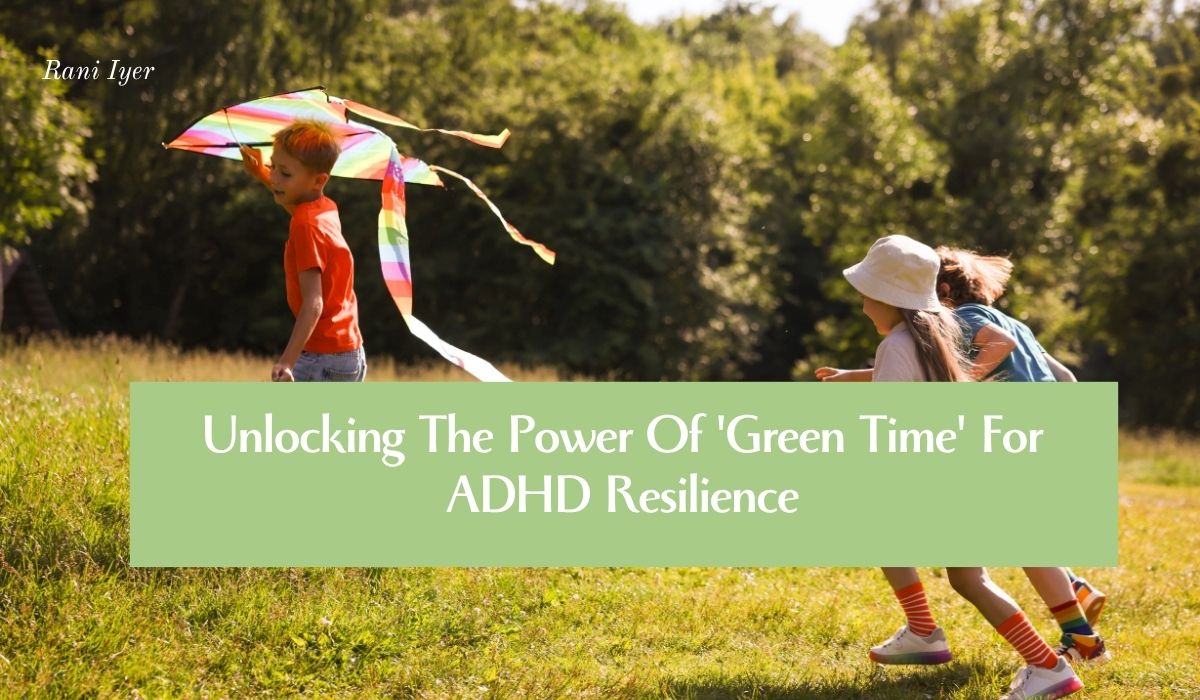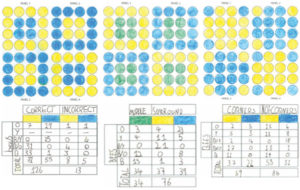In a world where screens often steal the spotlight, the great outdoors offers a refreshing antidote, especially for children with ADHD. Nature’s vibrant rhythms and boundless opportunities for exploration can provide powerful remedies that nurture focus and creativity. From climbing trees to running through meadows, outdoor activities can significantly help children channel their energy positively. This article will unveil the top outdoor activities that not only foster a sense of adventure but also serve as effective tools to support children’s mental well-being. Get ready to discover how integrating nature into your child’s routine can transform their daily experiences, helping them to thrive in both play and learning. Embrace the wild and watch your child shine!
Understanding ADHD: Symptoms and Challenges
Attention Deficit Hyperactivity Disorder (ADHD) is a neurodevelopmental disorder that affects millions of children worldwide. Characterized by symptoms such as inattention, hyperactivity, and impulsivity, ADHD can significantly impact a child’s academic performance, social interactions, and overall quality of life. Children with ADHD might struggle to stay focused on tasks, follow instructions, or sit still for extended periods, which can lead to frustration for both the child and their caregivers.
One of the primary challenges in managing ADHD is finding effective strategies that cater to each child’s unique needs. Traditional approaches often include medication and behavioral therapy, but these methods might not be sufficient for all children. Moreover, medications can sometimes have side effects that may interfere with a child’s daily activities and overall well-being. Therefore, exploring alternative and complementary approaches, such as incorporating outdoor activities, can be crucial in providing a holistic management plan for children with ADHD.
Understanding the specific symptoms and challenges associated with ADHD is essential for parents, educators, and caregivers. By recognizing patterns of behavior and identifying triggers, it becomes easier to implement strategies that can help children manage their symptoms more effectively. This knowledge also fosters a supportive environment where children with ADHD can thrive, both academically and socially. Integrating nature-based activities can be a game-changer in this regard, offering a natural and engaging way to channel their energy and improve focus.
The Benefits of Nature for Children with ADHD
Nature has a profound impact on our mental and physical health, and this is especially true for children with ADHD. Studies have shown that spending time outdoors can significantly reduce symptoms of ADHD, such as hyperactivity and inattention. The natural environment provides a multisensory experience that stimulates the brain in ways that indoor activities often cannot. The sights, sounds, and smells of nature can captivate a child’s attention and provide a calming effect, which is essential for children who struggle with hyperactivity.
One of the key benefits of nature for children with ADHD is its ability to promote physical activity. Engaging in outdoor play encourages movement, which helps to expend excess energy and reduce restlessness. Physical activity also stimulates the production of endorphins, which are natural mood enhancers. This can lead to improved mood and reduced anxiety, making it easier for children with ADHD to concentrate on tasks and interact positively with their peers.
In addition to physical benefits, nature offers a unique opportunity for children with ADHD to develop important life skills. Outdoor activities often require problem-solving, teamwork, and perseverance, which are valuable skills for any child. For children with ADHD, these experiences can help build self-confidence and resilience. Furthermore, spending time in nature fosters a sense of wonder and curiosity, encouraging children to explore and learn in a hands-on environment. This can be particularly beneficial for children with ADHD, as it allows them to engage with their surroundings in a meaningful and enjoyable way.
Outdoor Activities that Promote Focus and Calm
Outdoor activities provide a wonderful avenue for children with ADHD to channel their energy and improve their focus. Activities such as hiking, biking, and even simple nature walks can be incredibly beneficial. These activities not only offer physical exercise but also require concentration and coordination, which can help children develop better focus. Being in a natural setting away from the distractions of screens and noise can also contribute to a sense of calm and well-being.
One highly effective activity is yoga in nature. Practicing yoga outdoors combines the benefits of physical exercise with the calming effects of nature. Yoga helps children with ADHD improve their balance, strength, and flexibility, while also teaching them mindfulness and relaxation techniques. The natural environment adds an extra layer of tranquility, making it easier for children to focus on their breathing and movements. This can lead to reduced stress and improved attention spans.
Another excellent outdoor activity is bird watching. This activity requires children to be still, quiet, and observant, which can help improve their attention and patience. Bird watching can also be a fun and educational experience, as children learn to identify different species and observe their behaviors. The peacefulness of being in nature and the focus required can help children with ADHD develop a sense of calm and concentration that can carry over into other areas of their lives.
Gardening: A Therapeutic Approach for ADHD
Gardening is a therapeutic activity that offers numerous benefits for children with ADHD. It provides a hands-on, sensory-rich experience that can help improve focus, patience, and responsibility. The act of planting seeds, nurturing plants, and watching them grow can be incredibly rewarding and calming. Gardening also offers an opportunity for children to connect with nature and learn about the environment in a tangible way.
One of the most significant benefits of gardening is its ability to teach children about cause and effect. By taking care of plants, children learn that their actions have consequences. This can be a powerful lesson for children with ADHD, who may struggle with impulse control and understanding the impact of their behavior. Gardening requires patience and consistency, as plants need regular care and attention to thrive. This can help children develop a sense of responsibility and discipline.
In addition to its educational benefits, gardening can also be a great way for children with ADHD to expend their energy in a productive and positive manner. Digging, planting, and watering are all physical activities that can help reduce hyperactivity and restlessness. The sensory experience of touching soil, smelling flowers, and listening to the sounds of nature can also have a calming effect, helping children feel more grounded and centered.
Nature Walks: Connecting with the Environment
Nature walks are a simple yet powerful way for children with ADHD to connect with the environment and reap the benefits of being outdoors. Walking in nature provides a low-impact form of exercise that can help reduce hyperactivity and improve mood. The rhythmic movement of walking can also have a calming effect, helping children with ADHD feel more relaxed and focused.
One of the key benefits of nature walks is the opportunity they provide for mindfulness. Encouraging children to pay attention to their surroundings, such as the sound of birds, the rustle of leaves, and the feel of the ground under their feet, can help them develop a greater sense of awareness and presence. This can be particularly beneficial for children with ADHD, who often struggle with being in the moment and staying focused.
Nature walks can also be an excellent opportunity for learning and exploration. Children can collect leaves, rocks, and other natural objects, and use them to learn about different plants and animals. This hands-on learning experience can be both fun and educational, helping children develop a deeper appreciation for the natural world. In addition, spending time in nature can foster a sense of wonder and curiosity, encouraging children to ask questions and seek out new knowledge.
Team Sports: Building Social Skills and Discipline
Team sports offer a unique opportunity for children with ADHD to develop important social skills and discipline. Participating in team sports requires children to work together, follow rules, and communicate effectively, which can help improve their social interactions and self-control. Sports such as soccer, basketball, and baseball can also provide a structured environment where children with ADHD can channel their energy and improve their focus.
One of the key benefits of team sports is the opportunity they provide for children to develop a sense of belonging and teamwork. Working together towards a common goal can help children with ADHD build positive relationships with their peers and develop a sense of camaraderie. This can be particularly important for children with ADHD, who may struggle with social interactions and making friends. Being part of a team can help them feel more connected and supported.
In addition to social benefits, team sports can also help children with ADHD develop important life skills such as discipline, perseverance, and time management. Sports require regular practice and commitment, which can help children develop a sense of responsibility and dedication. The structure and routine of team sports can also provide a sense of stability and predictability, which can be beneficial for children with ADHD who may struggle with transitions and changes in routine.
Mindfulness and Nature: Techniques for Relaxation
Combining mindfulness with nature can be a powerful tool for helping children with ADHD relax and improve their focus. Mindfulness involves paying attention to the present moment without judgment, and it can help children with ADHD develop greater self-awareness and emotional regulation. Practicing mindfulness in a natural setting can enhance these benefits, as nature provides a calming and distraction-free environment.
One effective mindfulness technique is mindful breathing. Encouraging children to focus on their breath while sitting quietly in nature can help them develop a sense of calm and relaxation. The natural sounds and sights can also help them stay focused and present. This practice can be particularly beneficial for children with ADHD, who often struggle with staying still and focused. Mindful breathing can help them develop better control over their attention and emotions.
Another mindfulness technique is mindful walking. This involves walking slowly and paying attention to the sensations of each step, such as the feel of the ground under their feet and the movement of their legs. Walking mindfully in nature can help children with ADHD develop greater body awareness and improve their concentration. It can also be a calming and grounding experience, helping them feel more connected to their surroundings and themselves.
Creative Outdoor Play: Encouraging Imagination
Creative outdoor play offers a wonderful opportunity for children with ADHD to use their imagination and express themselves in a positive and constructive manner. Activities such as building forts, creating nature art, and playing pretend games can help children develop creativity, problem-solving skills, and social interactions. The freedom and open-ended nature of outdoor play can be particularly beneficial for children with ADHD, who may struggle with structured and rigid activities.
One engaging outdoor play activity is creating a nature scavenger hunt. This involves making a list of natural objects for children to find, such as leaves, rocks, and flowers. Scavenger hunts encourage children to explore their surroundings and use their observation skills. They also provide a sense of adventure and excitement, which can help keep children with ADHD engaged and focused. The process of searching for and finding objects can also be a rewarding and confidence-building experience.
Another creative outdoor play activity is building with natural materials. Children can use sticks, stones, and other natural objects to create structures, such as forts, fairy houses, or sculptures. This type of play encourages children to use their imagination and problem-solving skills. It also provides a hands-on and sensory-rich experience, which can be particularly beneficial for children with ADHD. Building with natural materials allows children to experiment and create in a way that is free from rules and constraints.
Incorporating Nature into Daily Routines
Incorporating nature into daily routines can provide ongoing benefits for children with ADHD. Simple activities such as spending time in the backyard, going for a walk after school, or having outdoor family time can help children stay connected to nature and reap its benefits. Making nature a regular part of their routine can help children with ADHD develop better focus, reduce stress, and improve their overall well-being.
One effective way to incorporate nature into daily routines is by establishing outdoor rituals. This could be something as simple as having breakfast outside, doing homework in the garden, or having a bedtime walk. These rituals can provide a sense of structure and predictability, which can be beneficial for children with ADHD. They also provide regular opportunities for children to connect with nature and enjoy its calming effects.
Another way to incorporate nature into daily routines is by creating a nature-friendly home environment. This could involve setting up a small garden, having indoor plants, or creating a nature corner with natural objects such as rocks, shells, and leaves. Having a nature-friendly home environment can help children with ADHD feel more connected to nature and provide a sensory-rich experience that can be calming and grounding.
Conclusion: Embracing Nature for ADHD Management
In conclusion, nature offers a powerful and natural remedy for helping children with ADHD thrive. From outdoor activities that promote focus and calm to therapeutic gardening and mindful nature walks, there are numerous ways to incorporate nature into your child’s routine. These activities not only provide physical benefits but also help improve mental well-being, social skills, and overall quality of life.
Embracing nature as part of ADHD management can provide a holistic and complementary approach to traditional treatments. It offers a way for children to channel their energy positively, develop important life skills, and connect with their surroundings in a meaningful way. By making nature a regular part of their lives, children with ADHD can experience reduced symptoms, improved focus, and greater emotional regulation.
Ultimately, the great outdoors offers a wealth of opportunities for children with ADHD to explore, learn, and grow. By integrating nature into their daily routines, parents and caregivers can provide a supportive and nurturing environment that helps children with ADHD shine. So, embrace the wild, and watch your child thrive in the beauty and wonder of nature.




